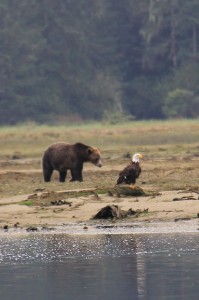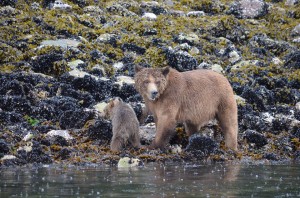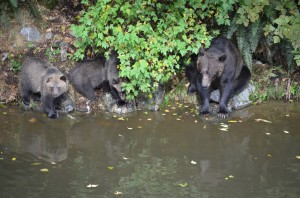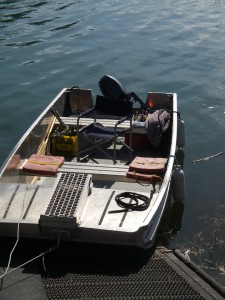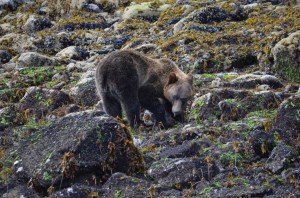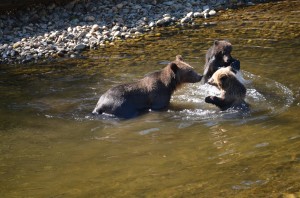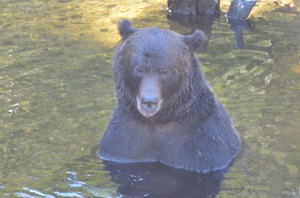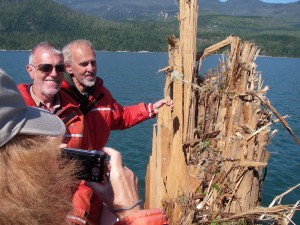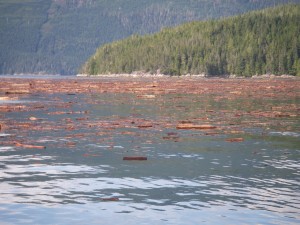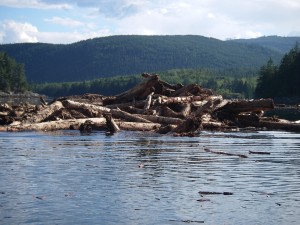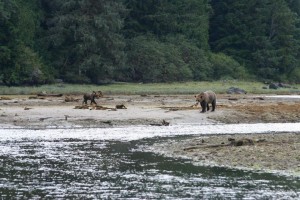
Spring grizzly bear tours from Grizzly Bear Lodge require a boat ride up Knight Inlet to the area of Glendale River. At low tide the bears come to the shore to roll the rocks in search of protein or to feed on the sedge grass along the shore. As the tide comes in we are able to move up the river estuary into the river channel and observe the bears on the mud flats. In this case it is a mother grizzly with a third year cub still tagging along. Cubs generally stay with their mother for two years, although they will stay for three or four if the sow does not become pregnant in the fall of their second year.
